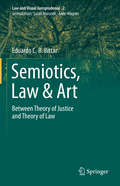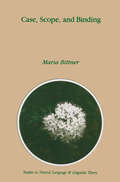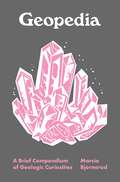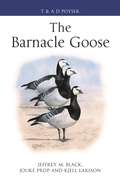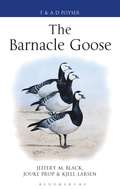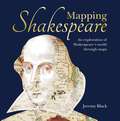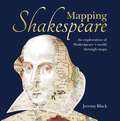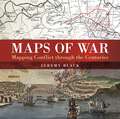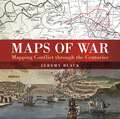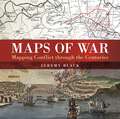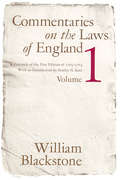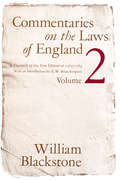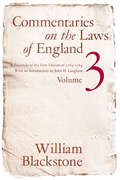- Table View
- List View
Semiotics, Law & Art: Between Theory of Justice and Theory of Law (Law and Visual Jurisprudence #2)
by Eduardo C.B. BittarThis book presents an interdisciplinary study of the relation between semiotics, law & art. Focusing on Greimasian semiotics, it examines specific works of art (from Giotto to Banksy) that deal with the theme of justice, promoting a more sensitive and humanized perception of the values that surround law. The book offers readers a comprehensive review of the semiotics of law, critically examining the relation between law & art. It covers a variety of topics, including semiotics, law and art; semiotics, art and experience; and society, law and art, as well as semiotics, law and painting; semiotics, law and architecture; semiotics, law and theatre; semiotics, law and literature; and semiotics, law and culture. In doing so, it uses the semiotics of painting to explain the symbology of justice and its significance in history; the semiotics of architecture to explain the setting of justice; the semiotics of theatre to explain the logic of the legal process; and the semiotics of literature to explain the narrative logic of legal decisions. Lastly, drawing on the semiotics of culture, it discusses ways of promoting justice, citizenship and human rights. Written from both philosophical and semiotical perspectives, the book enhances the centrality of visual jurisprudence studies to promote a better understanding of the role of law.
Case, Scope, and Binding (Studies in Natural Language and Linguistic Theory #30)
by M. BittnerCase, Scope, and Binding investigates the relation between syntax and semantics within a framework which combines the syntactic Government-Binding theory with a novel cross-linguistic theory of case and semantics. It is argued that case assignment, agreement, syntactic binding relations, as well as the minimum scopes of operators, are all determined by the relations which hold at the level of s-structure. Cross-linguistic variation with respect to these phenomena is due to corresponding variations at the s-structure level. The minimum scope of an operator cannot exceed its c-command domain at s-structure, but may be reduced by certain semantic mechanisms. The availability of any wider scope option depends on the possibility of movement at LF. The proposed theory is tested in detail against the facts of Inuit (Eskimo-Aleut family), an ergative language with typologically unusual scope and binding relations. For linguists and philosophers interested in syntax, semantics, or the syntax-semantics interface.
My Revision Notes: AQA GCSE (9–1) PE Third Edition
by Kirk BizleySet students on track to achieve the best grade possible with our My Revision Notes for AQA GCSE (9-1) PE.Our clear and concise approach to revision will help students learn, practise and apply their skills and understanding. Coverage of key content is combined with practical study tips and effective revision strategies to create a guide that can be relied on to build both knowledge and confidence.- Consolidate knowledge with clear, concise and relevant content coverage, based on what examiners are looking for- Extend understanding with our regular 'Now Test Yourself', tasks and answers- Improve technique through our increased exam support, including exam-style practice questions, expert tips and examples of typical mistakes to avoid- Identify key connections between topics and subjects with our 'Making Links' focus and further ideas for follow-up and revision activities- Plan and manage a successful revision programme with our topic-by-topic planner, new skills checklist and exam breakdown features, user-friendly definitions and glossary
My Revision Notes: AQA GCSE (9–1) PE Third Edition
by Kirk BizleySet students on track to achieve the best grade possible with our My Revision Notes for AQA GCSE (9-1) PE.Our clear and concise approach to revision will help students learn, practise and apply their skills and understanding. Coverage of key content is combined with practical study tips and effective revision strategies to create a guide that can be relied on to build both knowledge and confidence.- Consolidate knowledge with clear, concise and relevant content coverage, based on what examiners are looking for- Extend understanding with our regular 'Now Test Yourself', tasks and answers- Improve technique through our increased exam support, including exam-style practice questions, expert tips and examples of typical mistakes to avoid- Identify key connections between topics and subjects with our 'Making Links' focus and further ideas for follow-up and revision activities- Plan and manage a successful revision programme with our topic-by-topic planner, new skills checklist and exam breakdown features, user-friendly definitions and glossary
Kanban in 30 Days
by Tomas Bjorkholm Jannika BjorkholmIf you want to simplify your processes, improve collaboration and manage projects successfully, this guide to Kanban is an essential companion. Created primarily for software developers, but packed with insights and tips for anyone that understands the challenges of project management, this is your rapid route into innovative and Agile ways of working.
Geopedia: A Brief Compendium of Geologic Curiosities (Pedia Books #6)
by Marcia BjornerudA garden of geologic delights for all EarthlingsGeopedia is a trove of geologic wonders and the evocative terms that humans have devised to describe them. Featuring dozens of entries—from Acasta gneiss to Zircon—this illustrated compendium is brimming with lapidary and lexical insights that will delight rockhounds and word lovers alike.Geoscientists are magpies for words, and with good reason. The sheer profusion of minerals, landforms, and geologic events produced by our creative planet demands an immense vocabulary to match. Marcia Bjornerud shows how this lexicon reflects not only the diversity of rocks and geologic processes but also the long history of human interactions with them.With wit and warmth, she invites all readers to celebrate the geologic glossary—a gallimaufry of allusions to mythology, imports from diverse languages, embarrassing anachronisms, and recent neologisms. This captivating book includes cross-references at the end of each entry, inviting you to leave the alphabetic trail and meander through it like a river. Its pocket-friendly size makes it the perfect travel companion no matter where your own geologic forays may lead you.With whimsical illustrations by Haley Hagerman, Geopedia is a mix of engaging and entertaining facts about how the earth works, how it has coevolved with life over billions of years, and how our understanding of the planet has deepened over time.Features a real cloth cover with an elaborate foil-stamped design
Geopedia: A Brief Compendium of Geologic Curiosities (Pedia Books #6)
by Marcia BjornerudA garden of geologic delights for all EarthlingsGeopedia is a trove of geologic wonders and the evocative terms that humans have devised to describe them. Featuring dozens of entries—from Acasta gneiss to Zircon—this illustrated compendium is brimming with lapidary and lexical insights that will delight rockhounds and word lovers alike.Geoscientists are magpies for words, and with good reason. The sheer profusion of minerals, landforms, and geologic events produced by our creative planet demands an immense vocabulary to match. Marcia Bjornerud shows how this lexicon reflects not only the diversity of rocks and geologic processes but also the long history of human interactions with them.With wit and warmth, she invites all readers to celebrate the geologic glossary—a gallimaufry of allusions to mythology, imports from diverse languages, embarrassing anachronisms, and recent neologisms. This captivating book includes cross-references at the end of each entry, inviting you to leave the alphabetic trail and meander through it like a river. Its pocket-friendly size makes it the perfect travel companion no matter where your own geologic forays may lead you.With whimsical illustrations by Haley Hagerman, Geopedia is a mix of engaging and entertaining facts about how the earth works, how it has coevolved with life over billions of years, and how our understanding of the planet has deepened over time.Features a real cloth cover with an elaborate foil-stamped design
Surnames of Scotland: Their Origin, Meaning and History
by George Fraser BlackFirst published by the New York Public Library in 1946, Black’s The Surnames of Scotland has long established itself as one of the great classics of genealogy. Arranged alphabetically, each entry contains a concise history of the family in question (with many cross-references), making it an indispensable tool for those researching their own family history, as well as readers with a general interest in Scottish history.An informative introduction and glossary also provide much useful information.
The Barnacle Goose
by Jeffrey M. Black Jouke Prop Kjell LarssonThe Barnacle Goose, a distinctive, handsome black-and-white bird, gets its name from a mediaeval myth that the birds hatched from barnacles – how else to explain their sudden appearance each autumn in northern Britain? We now know, of course, that the birds migrate from Arctic Russia, Norway and Svalbard to winter throughout northern Europe. This book represents a culmination of more than 25 years of Barnacle Goose research. It represents the story of one of Europe's most celebrated long-term behavioral studies, detailing the lives of these social and sociable birds. Chapters include sections on pair formation and bonding, family and population dynamics, brood parasitism, food and feeding, size and shape in different populations, life cycle, survivorship, dispersal, migration, and conservation, with particular regard to climate change. It is a rigorous and thorough examination of the lives of these birds, in fine Poyser tradition.
The Barnacle Goose
by Jeffrey M. Black Jouke Prop Kjell LarssonThe Barnacle Goose, a distinctive, handsome black-and-white bird, gets its name from a mediaeval myth that the birds hatched from barnacles – how else to explain their sudden appearance each autumn in northern Britain? We now know, of course, that the birds migrate from Arctic Russia, Norway and Svalbard to winter throughout northern Europe. This book represents a culmination of more than 25 years of Barnacle Goose research. It represents the story of one of Europe's most celebrated long-term behavioral studies, detailing the lives of these social and sociable birds. Chapters include sections on pair formation and bonding, family and population dynamics, brood parasitism, food and feeding, size and shape in different populations, life cycle, survivorship, dispersal, migration, and conservation, with particular regard to climate change. It is a rigorous and thorough examination of the lives of these birds, in fine Poyser tradition.
Mapping Shakespeare: An exploration of Shakespeare’s worlds through maps
by Jeremy BlackWilliam Shakespeare's lifetime (1564–1616) spanned the reigns of the last of the Tudors, Elizabeth I and the first of the Stuart kings, James I and the changing times and political mores of the time were reflected through his plays. This beautiful new book looks at the England in which Shakespeare worked through maps and illustrations that reveal the way that he and his contemporaries saw their land and their place in the world. It also explores the locations of his plays and looks at the possible inspirations for these and why Shakespeare would have chosen to set his stories there.
Mapping Shakespeare: An exploration of Shakespeare’s worlds through maps
by Jeremy BlackWilliam Shakespeare's lifetime (1564–1616) spanned the reigns of the last of the Tudors, Elizabeth I and the first of the Stuart kings, James I and the changing times and political mores of the time were reflected through his plays. This beautiful new book looks at the England in which Shakespeare worked through maps and illustrations that reveal the way that he and his contemporaries saw their land and their place in the world. It also explores the locations of his plays and looks at the possible inspirations for these and why Shakespeare would have chosen to set his stories there.
Maps of War: Mapping Conflict Through the Centuries
by Jeremy BlackThere is little documented mapping of conflict prior to the Renaissance period, but, from the 17th century onwards, military commanders and strategists began to document the wars in which they were involved and later, to use mapping to actually plan the progress of a conflict. Using contemporary maps, this sumptuous new volume covers the history of the mapping of war on land and shows the way in which maps provide a guide to the history of war. Content includes:The beginnings of military mapping up to 1600 including the impact of printing and the introduction of gunpowderThe seventeenth century: The focus is on maps to illustrate war, rather than as a planning tool and the chapter considers the particular significance of maps of fortifications.The eighteenth century: The growing need for maps on a world scale reflects the spread of European power and of transoceanic conflict between Europeans. This chapter focuses in particular on the American War of Independence.The nineteenth century: Key developments included contouring and the creation of military surveying. Subjects include the Napoleonic Wars and the American Civil WarThe twentieth century including extended features on the First and Second World Wars including maps showing trench warfare and aerial reconnaissance. Much of the chapter focuses on the period from 1945 to the present day including special sections on the Vietnam War and the Gulf Wars.
Maps of War: Mapping Conflict Through the Centuries
by Jeremy BlackThere is little documented mapping of conflict prior to the Renaissance period, but, from the 17th century onwards, military commanders and strategists began to document the wars in which they were involved and later, to use mapping to actually plan the progress of a conflict. Using contemporary maps, this sumptuous new volume covers the history of the mapping of war on land and shows the way in which maps provide a guide to the history of war. Content includes:The beginnings of military mapping up to 1600 including the impact of printing and the introduction of gunpowderThe seventeenth century: The focus is on maps to illustrate war, rather than as a planning tool and the chapter considers the particular significance of maps of fortifications.The eighteenth century: The growing need for maps on a world scale reflects the spread of European power and of transoceanic conflict between Europeans. This chapter focuses in particular on the American War of Independence.The nineteenth century: Key developments included contouring and the creation of military surveying. Subjects include the Napoleonic Wars and the American Civil WarThe twentieth century including extended features on the First and Second World Wars including maps showing trench warfare and aerial reconnaissance. Much of the chapter focuses on the period from 1945 to the present day including special sections on the Vietnam War and the Gulf Wars.
Maps of War: Mapping Conflict Through the Centuries
by Jeremy BlackThere is little documented mapping of conflict prior to the Renaissance period, but, from the 17th century onwards, military commanders and strategists began to document the wars in which they were involved and later, to use mapping to actually plan the progress of a conflict. Using contemporary maps, this sumptuous new volume covers the history of the mapping of war on land and shows the way in which maps provide a guide to the history of war. Content includes:The beginnings of military mapping up to 1600 including the impact of printing and the introduction of gunpowderThe seventeenth century: The focus is on maps to illustrate war, rather than as a planning tool and the chapter considers the particular significance of maps of fortifications.The eighteenth century: The growing need for maps on a world scale reflects the spread of European power and of transoceanic conflict between Europeans. This chapter focuses in particular on the American War of Independence.The nineteenth century: Key developments included contouring and the creation of military surveying. Subjects include the Napoleonic Wars and the American Civil WarThe twentieth century including extended features on the First and Second World Wars including maps showing trench warfare and aerial reconnaissance. Much of the chapter focuses on the period from 1945 to the present day including special sections on the Vietnam War and the Gulf Wars.
Maps of War: Mapping Conflict Through the Centuries
by Jeremy BlackThere is little documented mapping of conflict prior to the Renaissance period, but, from the 17th century onwards, military commanders and strategists began to document the wars in which they were involved and later, to use mapping to actually plan the progress of a conflict. Using contemporary maps, this sumptuous new volume covers the history of the mapping of war on land and shows the way in which maps provide a guide to the history of war. Content includes:The beginnings of military mapping up to 1600 including the impact of printing and the introduction of gunpowderThe seventeenth century: The focus is on maps to illustrate war, rather than as a planning tool and the chapter considers the particular significance of maps of fortifications.The eighteenth century: The growing need for maps on a world scale reflects the spread of European power and of transoceanic conflict between Europeans. This chapter focuses in particular on the American War of Independence.The nineteenth century: Key developments included contouring and the creation of military surveying. Subjects include the Napoleonic Wars and the American Civil WarThe twentieth century including extended features on the First and Second World Wars including maps showing trench warfare and aerial reconnaissance. Much of the chapter focuses on the period from 1945 to the present day including special sections on the Vietnam War and the Gulf Wars.
A History of Europe: From Pre-History to the 21st Century
by Professor Jeremy BlackA History of Europe is a masterful narrative, bringing together the continent's common threads of history from the end of the ice ages until the present day. Leading historian Professor Jeremy Black takes a journey through the vast sweep of European history, examining events as diverse as the rise of the Roman Empire, the brutal Viking raids, the cultural explosion of the Renaissance period, the dissolution of the Soviet Union and the rise of consumer culture in the 21st century. These varied strands are bought together in a clear and concise narrative, perfect for anyone wanting a comprehensive look at Europe's fascinating and complex past.
Alcohol in Popular Culture: An Encyclopedia
by Rachel BlackThis encyclopedia presents the many sides of America's ongoing relationship with alcohol, examining the political history, pivotal events, popular culture, and advances in technology that have affected its consumption.From the constant advertising messages from beer, wine and liquor manufacturers to parties, weddings, and other social gatherings where alcohol is served to after-work happy hours with coworkers, the influence and presence of alcohol are inescapable in the United States. According to a government source, 50 percent of American adults identified themselves as "regular drinkers" (having at least 12 drinks in the past year).This encyclopedia presents an overview of the entire history of alcohol in America from the first colonies to present day, focusing on the often-marginalized and pop culture aspects of alcohol use and misuse. Entries illuminate topics such as the favorite alcoholic beverages in America; how they are manufactured; the role of alcohol in everyday life, special events, and across history; the impacts of alcohol consumption on society and health; and much more. Connections and influences from outside the United States are also considered for some topics.
Alcohol in Popular Culture: An Encyclopedia
by Rachel BlackThis encyclopedia presents the many sides of America's ongoing relationship with alcohol, examining the political history, pivotal events, popular culture, and advances in technology that have affected its consumption.From the constant advertising messages from beer, wine and liquor manufacturers to parties, weddings, and other social gatherings where alcohol is served to after-work happy hours with coworkers, the influence and presence of alcohol are inescapable in the United States. According to a government source, 50 percent of American adults identified themselves as "regular drinkers" (having at least 12 drinks in the past year).This encyclopedia presents an overview of the entire history of alcohol in America from the first colonies to present day, focusing on the often-marginalized and pop culture aspects of alcohol use and misuse. Entries illuminate topics such as the favorite alcoholic beverages in America; how they are manufactured; the role of alcohol in everyday life, special events, and across history; the impacts of alcohol consumption on society and health; and much more. Connections and influences from outside the United States are also considered for some topics.
The Oxford Dictionary of Philosophy (Oxford Quick Reference)
by Simon BlackburnThis bestselling dictionary is written by one of the leading philosophers of our time, and it is widely recognized as the best dictionary of its kind. Comprehensive and authoritative, it covers every aspect of philosophy from Aristotle to Zen. With clear and concise definitions, it provides lively and accessible coverage of not only Western philosophical traditions, but also themes from Chinese, Indian, Islamic, and Jewish philosophy. Entries include over 400 biographies of famous and influential philosophers, in-depth analysis of philosophical terms and concepts, and a chronology of philosophical events stretching from 10,000 BC to the present day. New entries on philosophy of economics, social theory, neuroscience, philosophy of the mind, and moral conceptions bring the third edition of this dictionary fully up to date. Fully cross-referenced and containing over 3,300 alphabetical entries, it is the ideal introduction to philosophy for anyone with an interest in the subject, and it is an indispensable work of reference for students and teachers.
Commentaries on the Laws of England, Volume 1: A Facsimile of the First Edition of 1765-1769
by William BlackstoneSir William Blackstone's Commentaries on the Laws of England (1765-1769) stands as the first great effort to reduce the English common law to a unified and rational system. Blackstone demonstrated that the English law as a system of justice was comparable to Roman law and the civil law of the Continent. Clearly and elegantly written, the work achieved immediate renown and exerted a powerful influence on legal education in England and in America which was to last into the late nineteenth century. The book is regarded not only as a legal classic but as a literary masterpiece. Previously available only in an expensive hardcover set, Commentaries on the Laws of England is published here in four separate volumes, each one affordably priced in a paperback edition. These works are facsimiles of the eighteenth-century first edition and are undistorted by later interpolations. Each volume deals with a particular field of law and carries with it an introduction by a leading contemporary scholar. In his introduction to this first volume, Of the Rights of Persons, Stanley N. Katz presents a brief history of Blackstone's academic and legal career and his purposes in writing the Commentaries. Katz discusses Blackstone's treatment of the structure of the English legal system, his attempts to justify it as the best form of government, and some of the problems he encountered in doing so.
Commentaries on the Laws of England, Volume 2: A Facsimile of the First Edition of 1765-1769
by William BlackstoneSir William Blackstone's Commentaries on the Laws of England (1765-1769) stands as the first great effort to reduce the English common law to a unified and rational system. Blackstone demonstrated that the English law as a system of justice was comparable to Roman law and the civil law of the Continent. Clearly and elegantly written, the work achieved immediate renown and exerted a powerful influence on legal education in England and in America which was to last into the late nineteenth century. The book is regarded not only as a legal classic but as a literary masterpiece. Previously available only in an expensive hardcover set, Commentaries on the Laws of England is published here in four separate volumes, each one affordably priced in a paperback edition. These works are facsimiles of the eighteenth-century first edition and are undistorted by later interpolations. Each volume deals with a particular field of law and carries with it an introduction by a leading contemporary scholar. Introducing this second volume, Of the Rights of Things, A. W. Brian Simpson discusses the history of Blackstone's theory of various aspects of property rights—real property, feudalism, estates, titles, personal property, and contracts—and the work of his predecessors.
Commentaries on the Laws of England, Volume 2: A Facsimile of the First Edition of 1765-1769
by William BlackstoneSir William Blackstone's Commentaries on the Laws of England (1765-1769) stands as the first great effort to reduce the English common law to a unified and rational system. Blackstone demonstrated that the English law as a system of justice was comparable to Roman law and the civil law of the Continent. Clearly and elegantly written, the work achieved immediate renown and exerted a powerful influence on legal education in England and in America which was to last into the late nineteenth century. The book is regarded not only as a legal classic but as a literary masterpiece. Previously available only in an expensive hardcover set, Commentaries on the Laws of England is published here in four separate volumes, each one affordably priced in a paperback edition. These works are facsimiles of the eighteenth-century first edition and are undistorted by later interpolations. Each volume deals with a particular field of law and carries with it an introduction by a leading contemporary scholar. Introducing this second volume, Of the Rights of Things, A. W. Brian Simpson discusses the history of Blackstone's theory of various aspects of property rights—real property, feudalism, estates, titles, personal property, and contracts—and the work of his predecessors.
Commentaries on the Laws of England, Volume 3: A Facsimile of the First Edition of 1765-1769
by William BlackstoneSir William Blackstone's Commentaries on the Laws of England (1765-1769) stands as the first great effort to reduce the English common law to a unified and rational system. Blackstone demonstrated that the English law as a system of justice was comparable to Roman law and the civil law of the Continent. Clearly and elegantly written, the work achieved immediate renown and exerted a powerful influence on legal education in England and in America which was to last into the late nineteenth century. The book is regarded not only as a legal classic but as a literary masterpiece. Previously available only in an expensive hardcover set, Commentaries on the Laws of England is published here in four separate volumes, each one affordably priced in a paperback edition. These works are facsimiles of the eighteenth-century first edition and are undistorted by later interpolations. Each volume deals with a particular field of law and carries with it an introduction by a leading contemporary scholar. Introducing this third volume, Of Private Wrongs, John H. Langbein discusses Blackstone's account of procedure and jurisdiction, jury trial, and equity. He also examines Blackstone's uneasy attitude toward the celebrated legal frictions of English civil procedure.
Commentaries on the Laws of England, Volume 3: A Facsimile of the First Edition of 1765-1769
by William BlackstoneSir William Blackstone's Commentaries on the Laws of England (1765-1769) stands as the first great effort to reduce the English common law to a unified and rational system. Blackstone demonstrated that the English law as a system of justice was comparable to Roman law and the civil law of the Continent. Clearly and elegantly written, the work achieved immediate renown and exerted a powerful influence on legal education in England and in America which was to last into the late nineteenth century. The book is regarded not only as a legal classic but as a literary masterpiece. Previously available only in an expensive hardcover set, Commentaries on the Laws of England is published here in four separate volumes, each one affordably priced in a paperback edition. These works are facsimiles of the eighteenth-century first edition and are undistorted by later interpolations. Each volume deals with a particular field of law and carries with it an introduction by a leading contemporary scholar. Introducing this third volume, Of Private Wrongs, John H. Langbein discusses Blackstone's account of procedure and jurisdiction, jury trial, and equity. He also examines Blackstone's uneasy attitude toward the celebrated legal frictions of English civil procedure.
